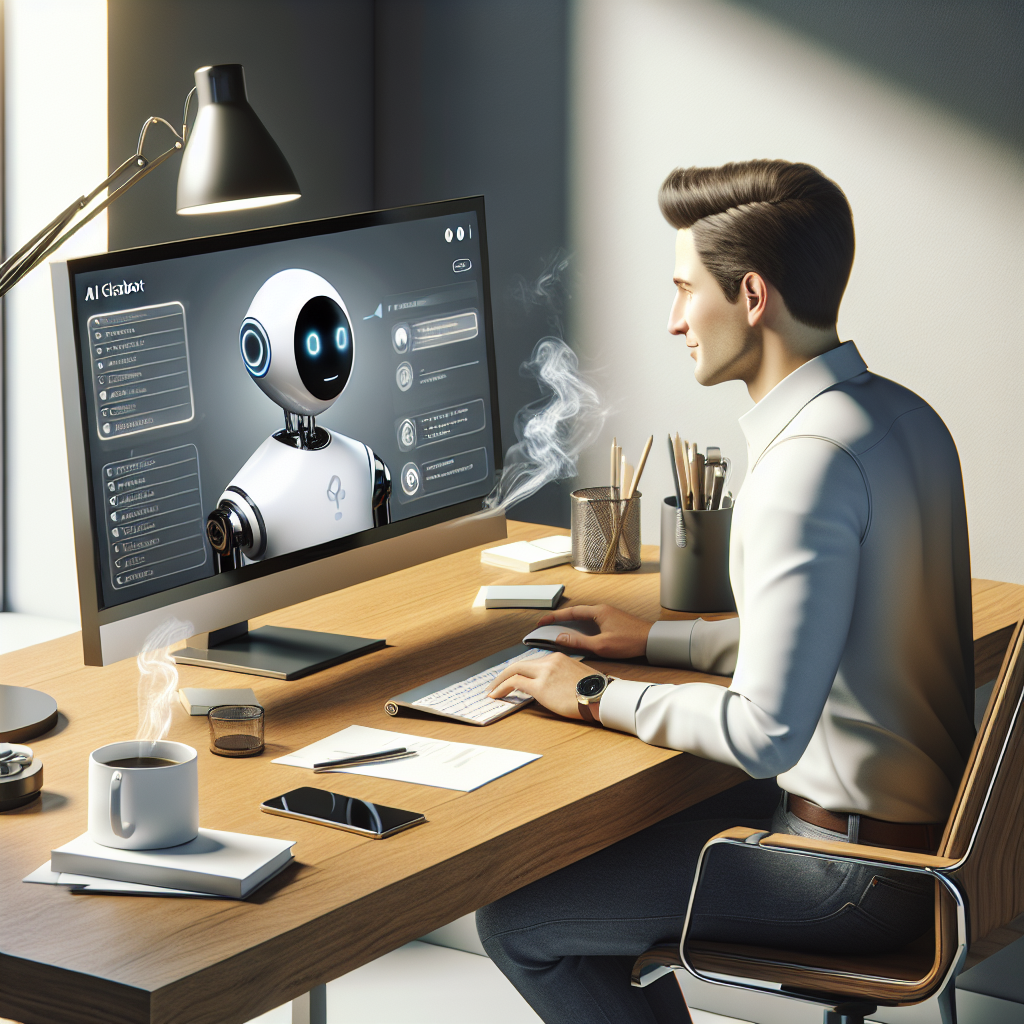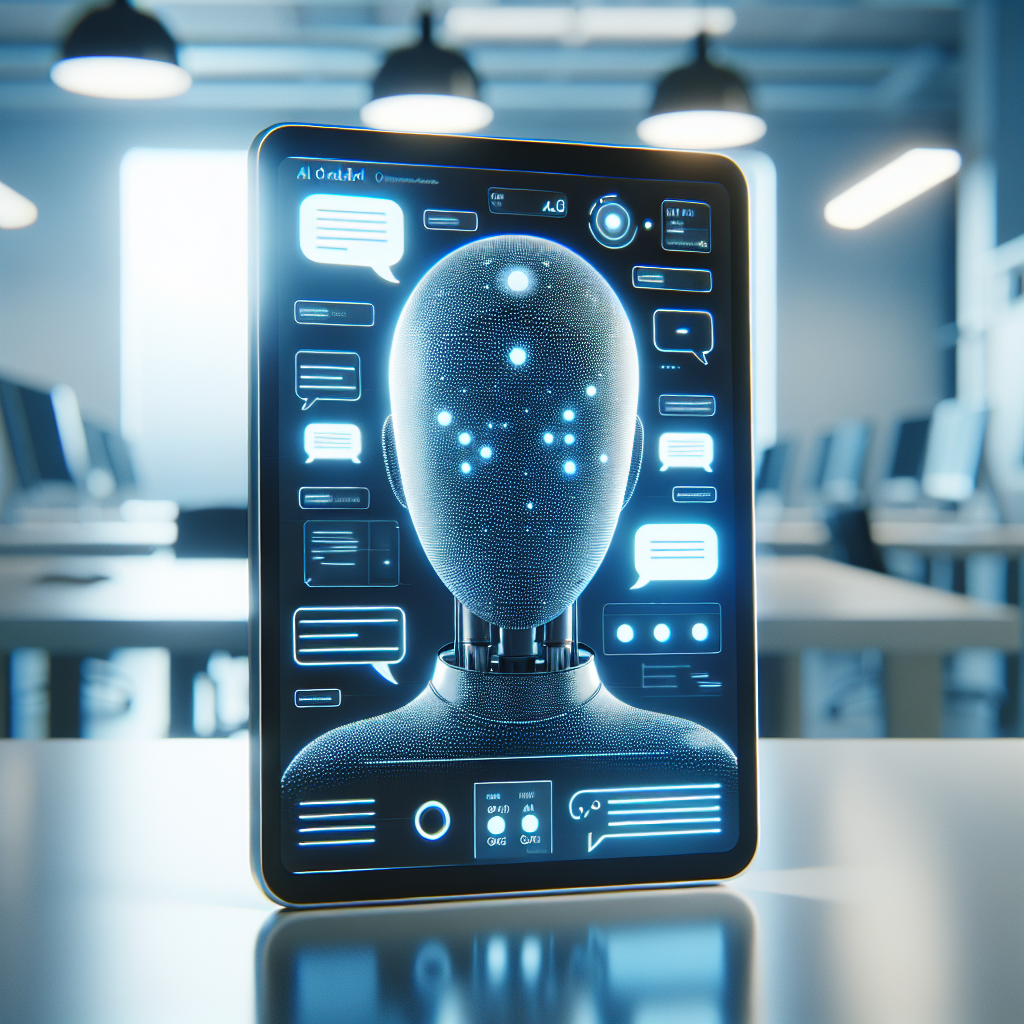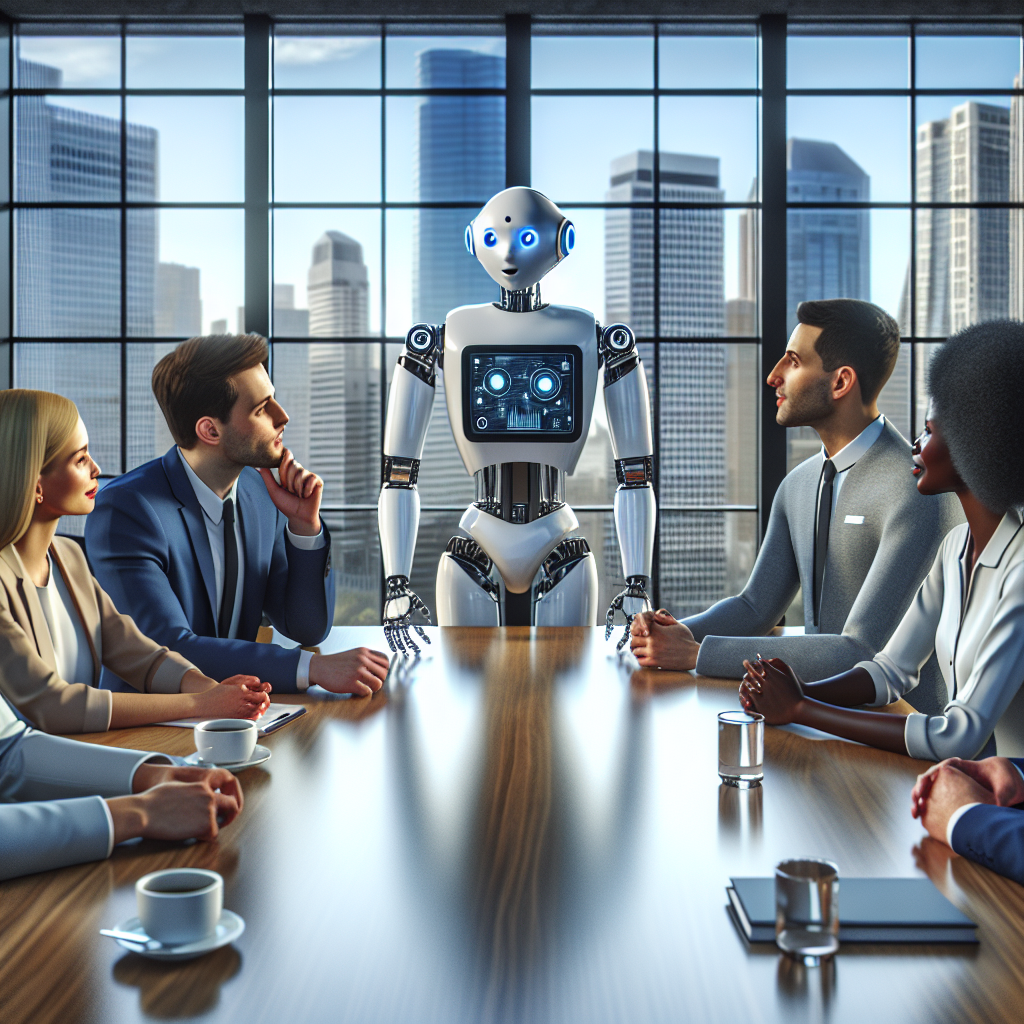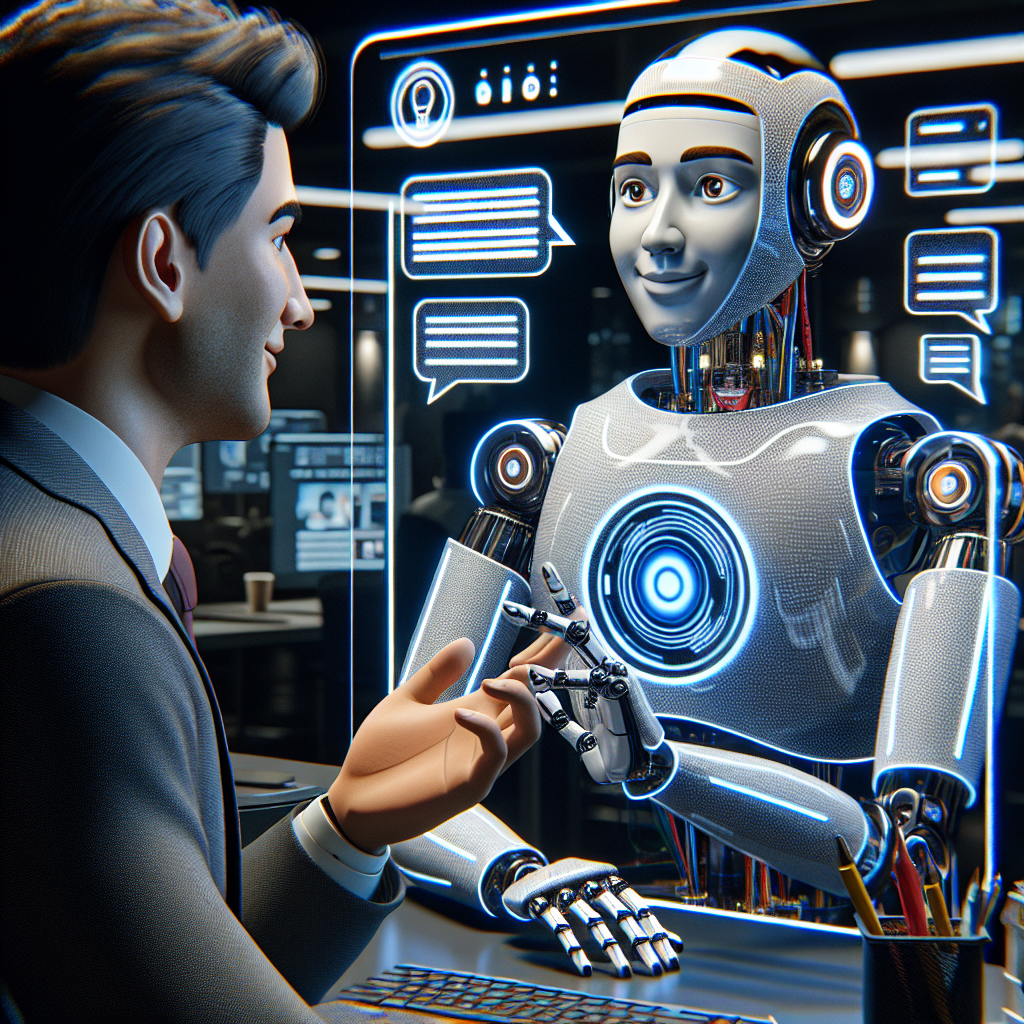Introduction to AI Chatbots: Everything You Need to Know

The realm of artificial intelligence has significantly transformed various aspects of our daily lives, and one of the most notable advancements is the development of AI chatbots. These automated conversational agents are designed to simulate human-like interactions and provide instant responses to user queries. Whether used in customer service, marketing, or personal assistants, AI chatbots offer a seamless and efficient way to handle multiple tasks simultaneously.
An introduction to AI chatbots begins with understanding the basic components that make up these intelligent agents. At their core, AI chatbots consist of a natural language processing (NLP) engine, a machine learning model, and a dataset for training. The NLP engine enables the chatbot to understand and interpret human language, while the machine learning model allows it to learn from past interactions and improve over time. The training dataset provides the necessary information for the chatbot to function effectively.
AI chatbots are utilized across various industries for their ability to enhance customer engagement and streamline operations. For instance, in the e-commerce sector, chatbots can assist customers with product recommendations, order tracking, and handling complaints. In the healthcare industry, they can provide preliminary diagnoses, schedule appointments, and offer health tips. The versatility and efficiency of AI chatbots make them an invaluable tool for businesses aiming to improve their customer service and operational efficiency.
If you’re eager to dive deeper into the world of AI chatbots and learn how to build one from scratch, consider enrolling in our comprehensive Learn AI Chatbot Course. This step-by-step guide is perfect for beginners and marketers looking to create powerful AI solutions.
How AI Chatbots Work

Understanding the inner workings of AI chatbots is crucial for leveraging their full potential. These sophisticated systems are powered by a combination of natural language processing (NLP), machine learning algorithms, and vast amounts of data. The process begins when a user inputs a query or command, which the chatbot must interpret and respond to appropriately.
The first step in this process is natural language understanding (NLU), a subset of NLP that focuses on comprehending the user’s intent and extracting relevant information. The chatbot uses NLU to analyze the input text, breaking it down into structured data that it can process. This involves identifying key elements such as entities (names, dates, locations) and intents (actions or queries the user wants to perform).
Once the input is understood, the chatbot leverages machine learning models to generate an appropriate response. These models are trained on large datasets containing numerous examples of human interactions. Over time, the chatbot learns to predict the best responses based on past interactions, continually improving its performance through a process known as reinforcement learning. This allows the chatbot to adapt to new queries and provide more accurate and relevant answers.
To deliver the response, the chatbot uses natural language generation (NLG), another component of NLP that focuses on converting the chatbot’s structured data back into human-readable text. The goal is to make the interaction as natural and fluid as possible, mimicking human conversation.
In summary, AI chatbots function through a seamless integration of NLU, machine learning, and NLG, enabling them to understand, learn, and interact effectively with users. This complex interplay of technologies is what makes AI chatbots such powerful tools in various applications.
Types of AI Chatbots
AI chatbots come in various types, each designed to meet specific needs and use cases. The primary distinction lies in their complexity and the technologies they utilize. Here, we’ll explore the most common types of AI chatbots:
1. Rule-Based Chatbots: These chatbots follow a pre-defined set of rules and scripts to guide their interactions. They are typically used for straightforward tasks like answering FAQs or providing basic customer service. While they are easy to build and maintain, their functionality is limited to the scenarios they have been explicitly programmed for.
2. Retrieval-Based Chatbots: These chatbots use a repository of predefined responses and leverage algorithms to select the most appropriate one based on the user’s query. They are more flexible than rule-based chatbots but still rely on a fixed dataset of possible responses. They are effective for more complex interactions while still maintaining a high degree of control over the responses.
3. Generative Chatbots: Unlike retrieval-based chatbots, generative chatbots can create responses on the fly using machine learning models, particularly neural networks. This allows them to generate more natural and varied conversations. They are capable of handling a broader range of topics but require extensive training data and computational resources.
4. Hybrid Chatbots: These chatbots combine elements of both retrieval-based and generative models. They use predefined responses for common queries while leveraging generative capabilities for more complex interactions. This hybrid approach provides a balance between reliability and flexibility, making them suitable for diverse applications.
Each type of AI chatbot has its strengths and weaknesses, and the choice of which to use depends on the specific requirements of the application. Whether you need a simple rule-based system for handling routine queries or a sophisticated generative model for engaging conversations, understanding these types will help you make an informed decision.
Benefits of Using AI Chatbots

The adoption of AI chatbots has surged across various industries, driven by their numerous benefits. Here, we delve into some of the most significant advantages of using AI chatbots:
1. 24/7 Availability: One of the primary benefits of AI chatbots is their ability to operate around the clock. Unlike human agents, chatbots do not require breaks or sleep, ensuring that customer inquiries are addressed promptly at any time of the day. This continual availability enhances customer satisfaction and can lead to increased engagement and sales.
2. Cost Efficiency: Deploying AI chatbots can lead to substantial cost savings for businesses. By automating routine tasks and customer service interactions, companies can reduce the need for a large customer support team. This not only cuts labor costs but also allows human agents to focus on more complex and value-added tasks.
3. Scalability: AI chatbots can handle a large volume of interactions simultaneously, making them highly scalable. Whether dealing with a sudden surge in customer inquiries during a promotional campaign or managing daily interactions, chatbots can scale effortlessly without compromising on response times or quality.
4. Consistency: Human agents may vary in their responses, leading to inconsistencies in customer service. AI chatbots, on the other hand, provide consistent responses based on their programming and training data. This consistency helps maintain a uniform brand voice and experience across all customer interactions.
5. Data Collection and Insights: AI chatbots can gather and analyze vast amounts of data from customer interactions. This data can provide valuable insights into customer preferences, behaviors, and common issues. Businesses can leverage these insights to improve their products, services, and overall customer experience.
6. Personalization: Advanced AI chatbots can offer personalized interactions by leveraging user data and machine learning algorithms. By understanding individual preferences and past interactions, chatbots can tailor responses and recommendations, enhancing the user experience and fostering customer loyalty.
Incorporating AI chatbots into your business strategy can lead to significant improvements in operational efficiency, customer satisfaction, and overall growth. As technology continues to evolve, the potential benefits of AI chatbots are likely to expand even further.
Challenges in Developing AI Chatbots

While AI chatbots offer numerous benefits, developing them comes with its own set of challenges. Understanding these challenges is crucial for creating effective and efficient chatbot solutions:
1. Natural Language Understanding (NLU): Achieving advanced NLU capabilities is one of the most significant hurdles in chatbot development. Human language is complex and often ambiguous, making it difficult for chatbots to accurately interpret and respond to various queries. Developers must constantly work on improving the chatbot’s language model to handle a wide range of linguistic nuances.
2. Integration with Existing Systems: For AI chatbots to be effective, they often need to integrate with existing business systems such as CRM, ERP, and databases. Ensuring seamless integration can be challenging due to compatibility issues, the need for data synchronization, and the complexity of existing IT infrastructure.
3. Security and Privacy: AI chatbots handle sensitive customer information, making security and privacy a top concern. Developers must implement robust security measures to protect data from breaches and ensure compliance with regulations such as GDPR. This involves encrypting data, implementing secure authentication mechanisms, and regularly updating the system to address vulnerabilities.
4. User Experience (UX) Design: Creating a user-friendly chatbot interface is crucial for user engagement and satisfaction. Poor UX design can lead to frustrating interactions and reduced user adoption. Developers need to focus on intuitive design, quick response times, and the ability to seamlessly hand off to human agents when necessary.
5. Continuous Learning and Improvement: AI chatbots require ongoing training and updates to remain effective. This involves regularly reviewing and analyzing chatbot interactions, retraining models with new data, and refining responses. The iterative nature of this process can be resource-intensive and requires a dedicated team to manage.
6. Handling Complex Queries: While AI chatbots excel at handling simple and repetitive tasks, they often struggle with complex or multi-step queries. Developing a chatbot capable of understanding and managing these complex interactions requires advanced AI techniques and substantial training data.
Despite these challenges, the potential benefits of AI chatbots make them a worthwhile investment. By addressing these issues head-on, developers can create sophisticated chatbots that provide significant value to businesses and users alike.
Future of AI Chatbots

The future of AI chatbots is both exciting and promising, as advancements in artificial intelligence continue to open up new possibilities. Here’s a glimpse into what we can expect in the coming years:
1. Enhanced Personalization: As AI algorithms become more sophisticated, chatbots will be able to deliver highly personalized experiences. By analyzing user data and preferences, chatbots will offer tailored recommendations, anticipate user needs, and provide more relevant responses, making interactions feel more human-like.
2. Multilingual Capabilities: The ability to understand and communicate in multiple languages will become a standard feature for AI chatbots. This will break down language barriers and enable businesses to serve a global audience more effectively. Continuous improvements in natural language processing (NLP) will further enhance this capability.
3. Improved Emotional Intelligence: Future chatbots will be equipped with emotional intelligence, allowing them to detect and respond to user emotions. By analyzing tone, sentiment, and context, chatbots will adapt their responses to better suit the emotional state of the user, leading to more empathetic and effective interactions.
4. Seamless Integration with IoT: The integration of AI chatbots with the Internet of Things (IoT) will revolutionize the way we interact with smart devices. Chatbots will serve as central control hubs, enabling users to manage multiple devices through natural language commands. This will enhance the convenience and functionality of smart homes and workplaces.
5. Autonomous Learning: Future AI chatbots will possess autonomous learning capabilities, allowing them to continuously improve without human intervention. By leveraging advanced machine learning techniques, chatbots will self-optimize based on user interactions, leading to more accurate and efficient performance over time.
6. Expansion into New Industries: While AI chatbots are already prevalent in customer service and marketing, their application will expand into new industries such as healthcare, education, and finance. In healthcare, for example, chatbots could assist with preliminary diagnoses and patient triage, while in education, they could provide personalized tutoring and support.
As AI technology continues to evolve, the capabilities and applications of chatbots will expand, making them an indispensable tool for businesses and consumers alike. If you’re excited about the future of AI chatbots and want to learn how to build your own, our Learn AI Chatbot Course is the perfect place to start. Join us today and be a part of this transformative journey!








